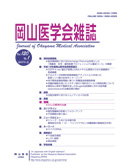

Journal of Okayama Medical Association
Published by Okayama Medical Association<Availability>
Full-text articles are available 3 years after publication.
Permalink : https://ousar.lib.okayama-u.ac.jp/40638
Studies on overcoming resistance in adriamycin-resistant Ehrlich ascites tumor cells by hyperthermia and cepharanthine
Inoue, Nobuhiro
Published Date
1990-06
Abstract
Adriamycin (ADR)-resistant Ehrlich ascites tumor cells (EATC) were established by repeated exposure to ADR. Using these resistant cells, the modification of the killing effect of ADR by hyperthermia and cepharanthine (CEP) was evaluated. The killing effect of ADR depended on the intracellular uptake and retention of ADR. ADR-resistant EATC had an enhanced acquired capacity that increased the efflux of intracellular ADR. Therefore, the intracellular uptake and retention of ADR were decreased. CEP inhibited the efflux of intracellular ADR and increased the intracellular retention of ADR, thereby enhancing the killing effect of ADR. Hyperthermic treatment increased the influx of ADR, but the killing effect of ADR was not enhanced by hyperthermia alone because of the increased efflux of intracellular ADR. However, with the combination of hyperthermia and CEP, hyperthermia accelerated the influx of ADR, and CEP suppressed the efflux of intracellular ADR. Then the intracellular uptake and retention of ADR were further increased, and the killing effect of ADR was markedly enhanced. Thus the combined use of hyperthermia and CEP reduced the resistance to ADR. These findings suggest that ADR resistance in cancer cells can be overcome by the combination of ADR, hyperthermia and CEP.
Keywords
Adriamycin
Adriamycin耐性細胞
Cepharanthine
Hyperthermia
ISSN
0030-1558
NCID
AN00032489
